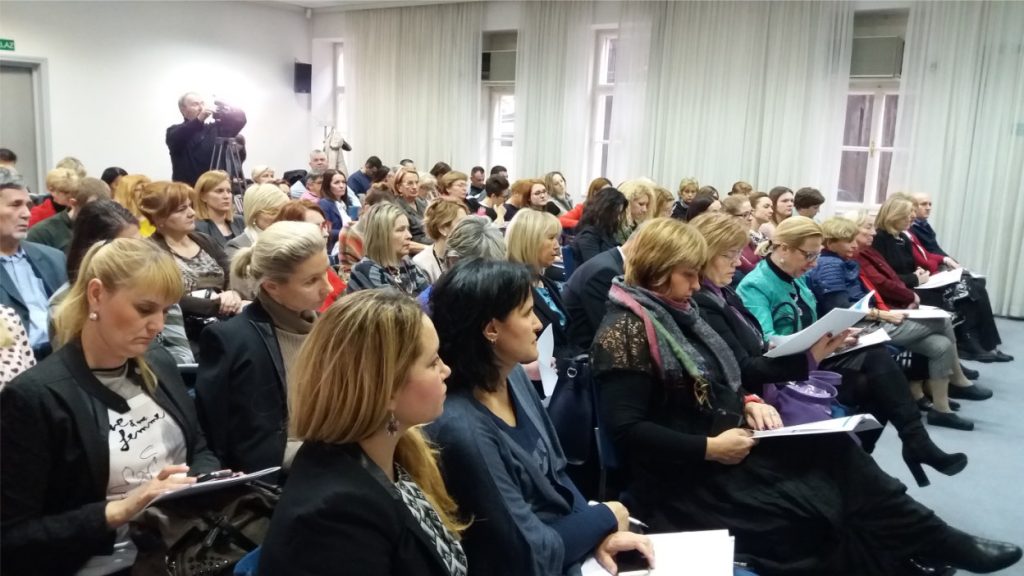CERANEO, in cooperation with the City of Zagreb, the City Office for Social Protection and Persons with Disabilities and the Social Council of the City of Zagreb, organized a public presentation of the Social Profile of the City of Zagreb in 2015, “Answers to the Challenges of population ageing”.
The Social Profile of the City of Zagreb in 2015 focuses on the challenges of an aging population.
According to information from civil society organizations, there is an increasing number of elderly people who, in the circumstances of the economic crisis, cannot count on the help of their families, so they are threatened with poverty and social exclusion. The need for long-term care is increasing. Part of the elderly population is also exposed to the risks of abuse when it comes to entering into contracts on lifetime and lifelong alimony. It is also about informing the elderly about the exercise of other social rights, especially those from the social welfare system.
The Social Profile of the City of Zagreb in 2015 shows the other most challenging trends in the social development of the City in nine areas.
Some of the key trends in the Social Profile of the City of Zagreb in 2015:
The vital statistics of the City of Zagreb are not helped by the data on the aging index, which also increased in 2015 and amounted to 125.4%, which represents an increase of 1.7% if we compare it with last year’s aging index. Also, the data on the natural increase, which in 2015 has a negative sign and amounts to -1.0, while in 2014 it was positive and amounts to 0.1, continues the negative series in the trends that follow the population of the City of Zagreb.
In 2015, the City of Zagreb recorded a positive migration balance between counties (4,420), but a negative migration balance with foreign countries (- 2,88).
In the City of Zagreb, according to data from 2011, there were 19.6% of single-parent families, while Croatia had 17.1% in this regard. Of the total number of single-parent families, mothers with children accounted for 85.3%, and fathers with children 14.7%.
According to the last population census from 2011, there were a total of 86,827 single-person households (28.6%) in the City of Zagreb, of which 63.7% (55,347) were women and 36.3% (31,480) men. According to the same list, people aged 65 to 85 and over make up 39.5% of single households.
In 2015, the City of Zagreb recorded a decrease in the rate of registered unemployment for the first time since 2008. There is still a negative trend of the largest share of the population aged 25 to 29 (12.8%) in the structure of unemployed persons in the City of Zagreb.
The average monthly salary in the City of Zagreb in 2015 was HRK 6,705, while in 2014 it was HRK 6,465. The highest salaries are paid in financial mediation/insurance activities (9,112 HRK), and the lowest in the area of administrative and auxiliary service activities (3,694 HRK).
The share of people with disabilities in the city of Zagreb in 2015 was 11.4%, which is only slightly lower than the average rate for Croatia and ranks Zagreb among the counties with a higher share of people with disabilities in the population.
Data for 2015 compared to 2014 show that the use of almost all rights from the social welfare system increased in the City of Zagreb, except for assistance and care allowance, placement in a family home (children and adults) and placement in a social care home (children and adults). The most pronounced increase was the use of the right to guaranteed minimum compensation (by 15.6%) and the right to one-time compensation (by 9.5%).
If we compare the data for 2015 with the data for 2014, we can see how the number of users of the 8 rights and services that the City of Zagreb provides to its citizens has decreased. The number of users of children’s summer vacations decreased significantly (by 48.3%), while the number of users of the right to a free monthly/annual demonstration ticket (by 67.5%) and the number of users of firewood aid (by 40.6%) increased significantly.
In total, 20,445 was allocated for the programs/projects of associations and other legal and natural persons in 2015 (through the City Office for Social Protection and Persons with Disabilities, the City Health Office, the City Office for Veterans and the City Office for Education, Culture and Sports). HRK 191.71, which represents a decrease of almost 20% compared to last year’s amount (HRK 25,243,644.45).

